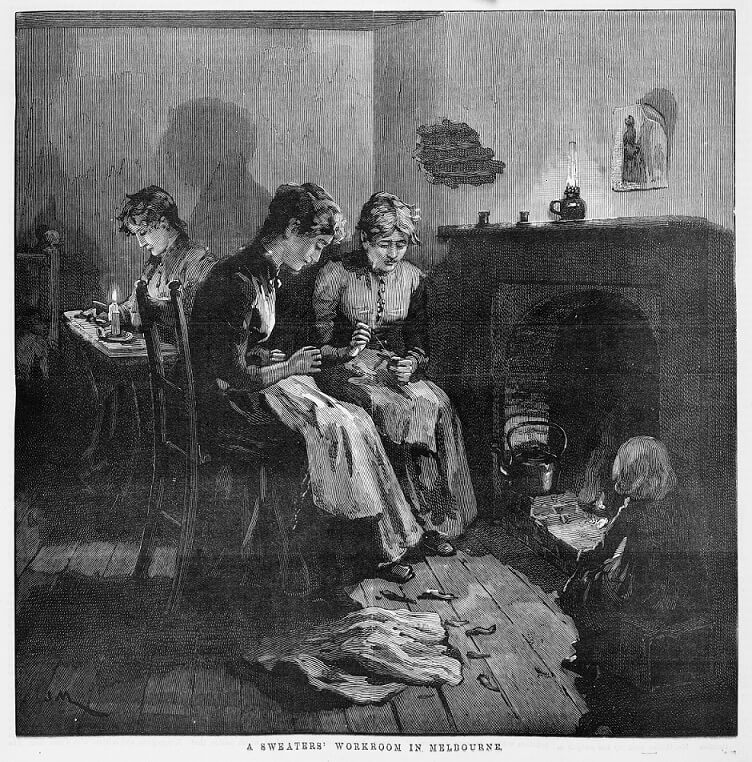The practice of ‘sweating’ was common in nineteenth century Melbourne. Sweated workers were outworkers, who were paid by the piece to assemble or finish garments in their homes. Some made buttonholes or sewed on buttons. Some would assemble whole garments, collecting the cut-out fabric pieces from the factory door and returning the finished articles. Rates of pay were very low, but the (mostly) women who worked as sweated workers usually had no choice. They were often lone breadwinners, tied to their homes by small children and unable to go to the factories to work. Most lived in desperate poverty. Repeated attempts were made to stamp out sweating and the Age newspaper in particular ran a long campaign against it, using emotional images like this one to inspire public sympathy. The Wesley Central Mission set up a committee to investigate sweating and its secretary, Samuel Mauger gave evidence to the 1893-4 Factories Act Enquiry Board. He advised that sweating was a particular problem in trades like boot making, baking and parts of the clothing industry. The resulting Factories and Shops Act of 1896 established wages boards to regulate wages in the trades most affected by sweating and also introduced a registration system for outworkers. The incidence of sweating declined as a result. But unfortunately government made no provision to assist the impoverished women who had depended on outwork to survive and who found themselves in an even more perilous economic position as a result of the ‘reforms’.
A Sweaters’ Workroom in Melbourne, Illustrated Australian News, 1 July 1890. David, Syme & Co.
Reproduced courtesy State Library Victoria

